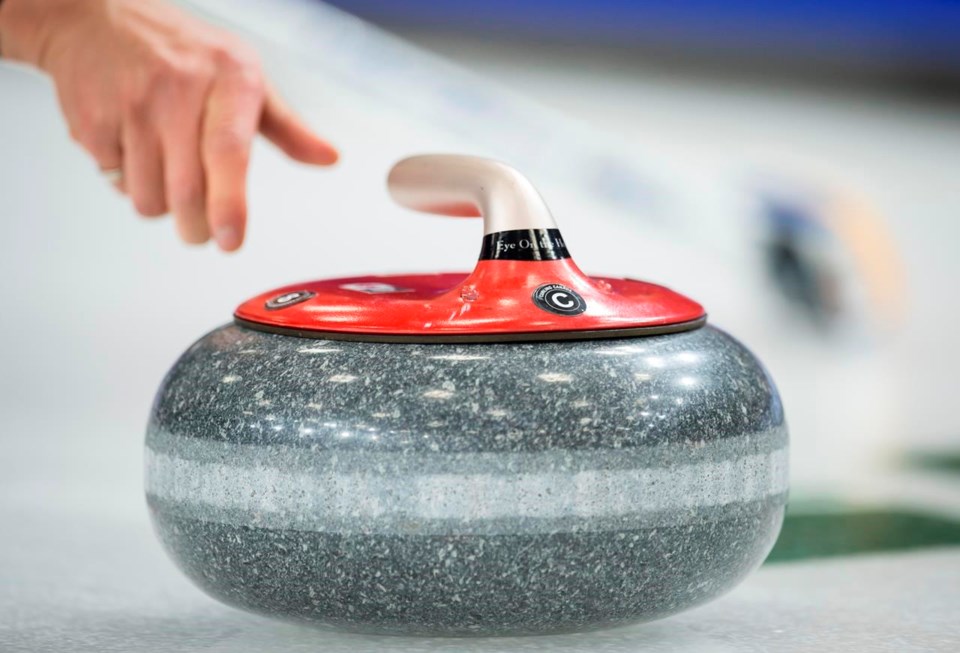The three-sheet Strait Area Community Curling Club has come to grips with the challenges that face other curling clubs across the country.
The 60-year-old club's membership in Port Hawkesbury, N.S., is down to between 80 and 90 members from a peak of 300, says club president Monica McCarthy.
Run by volunteers, the club tapped into a Curling Canada service that offers help for long-term survival.
"The last strategic plan the club did was in 2012," McCarthy said. "The board said that's long overdue."
Over three days in the fall of 2023, Strait board members and Curling Canada's manager of club development and membership services Bobby Ray began work on a strategic plan.
The Strait's board will finalize a draft of that plan Sunday, McCarthy said.
"We'd like more clubs to have a strategic plan," said Ray. "Curling Alberta, about two years ago, did a survey of their clubs and that I think it was 31 per cent of their clubs had a strategic plan.
"We think it would be more helpful if that number was way higher, if a club understood who they were, what they were trying to accomplish and where they want to go and how they were going to do it."
The cost of the strategic planning seminar was $2,800 and the Strait was able to get municipal funding that covered two-thirds of the cost, McCarthy said.
Ray has also worked with Dawson Creek Curling Club in B.C., and Westlock Curling Club in Alberta on strategic plans.
"We came out of the session knowing we had a lot of work to do, but that we take it one step at a time," McCarthy said. "I think we have a lot of potential."
Ray maintains interest in curling in Canada is high, but the way it is delivered needs to adapt to a changing world. Blockbuster didn't go out of business because people stopped watching movies, is among his analogies.
Strategic planning is one component of Curling Canada's Business of Curling program that started in 1994 when it was feared the banning of smoking in curling clubs would kill the sport.
COVID-19 pandemic recovery, competing with technology for people's attention and the lack of club manpower to recruit ethnically diverse people to what's been a recreational sport of older, white people are among curling's current hurdles.
And mechanical failures in facilities over a half-century old has closed clubs, some permanently, because they're unable to afford a large capital cost.
"Our program tries to embrace that the world is in a constant state of change," Ray said. "The way people did things in the past is not the way they do them today, and won't be in the future. The reality is that people want to interact with curling in new and innovative ways.
"I use the analogy of the dance club. We don't dance like the people who danced in the 1950s, which changed in the '60s and the '70s."
The Business of Curling program includes a Facebook page where club general managers, board members and volunteers seek and offer advice, as well as a web page of best practices. Curling Canada holds symposiums for multiple clubs at once. Strategic planning is one-on-one.
Diversity, equity and inclusion (DEI) and how to make the Strait accessible for people with mobility challenges were identified as that club's priorities McCarthy said.
"An aging demographic is definitely a challenge," she said. "The newest thing was DEI, diversity, equity and inclusion. That wasn't even talked about (in 2012). Basically what we have in our club are Caucasians. We have one Indigenous member.
"We have a new Filipino community in the area which we've reached out to . . . to come try curling. We need to do more."
Ray says people operating curling clubs are receptive to new ideas. The issue is who is going to carry out those ideas.
"Everyone's complaining about volunteer burnout," he said. "We're encouraging clubs to look at paying people to do work, which is something you would never dream bringing up at a curling clubs previously.
"Number one is maybe accepting our philosophy that a curling club is a business. We struck an association for curling professionals . . . sort of like the PGA is to golf. We're trying to create a role in our industry called the curling pro just like the golf pro and the tennis pro, who is an expert in league and event operations, who knows how to provide lessons and program ice.
"They're intended to be a revenue-generating position. If you hire someone who is really good at that work, it won't cost you money. They'll actually generate their salary back. Some clubs have had success doing so."
This report by The Canadian Press was first published Jan. 11, 2024.
Donna Spencer, The Canadian Press




